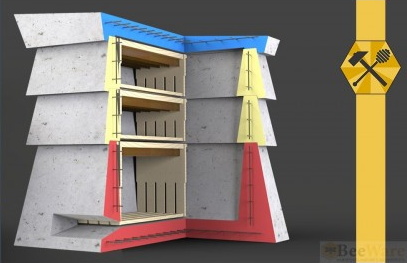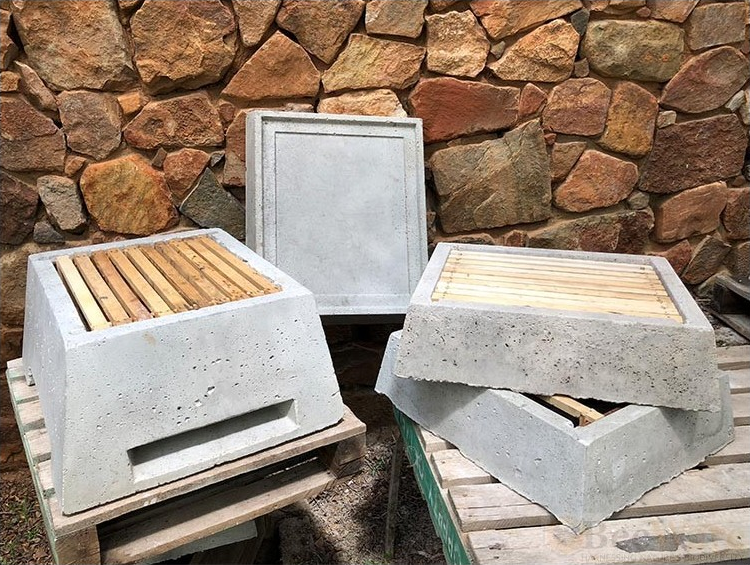Bee Bunka hive
"Bee Ready" Beehives
We supply complete beehives to the public and for projects
Compatible
No need to change standardised components like frames or excluders
Protect the Hive
Resistant to theft, vandalism, pests, fires, harsh weather and badgers
Visit Us
26 Jakaranda Street, Coachmans Crescent, Hennopspark
Shop #6, Centurion
+27 12 771 4288
Beehives have been around for centuries in different shapes, designs and sizes. It wasn’t until the Langstroth hive design that the beehive actually became standardised. There are still many different types of beehives in use across the world.
The mainstream beehive designs used in South Africa are the Langstroth beehive & Bee Bunka hive. The Langstroth Beehive hasn’t been changed much since its first inception in the 1800s. Small changes have been made do incorporate aluminium covers, the type of weather protection used on the wood and the use of a queen excluder to prevent egg-laying in the super chamber.
The beehive made beekeeping manageable as before the advent of the beehive, bee colonies would be raided for their golden liquid and usually, the colony would be destroyed in the process. This created the need for a manageable method to keep bees, transport them and harvest honey from them without causing damage or destruction to the bee colony.


Based on the most common modern beekeeping system the Bee Bunka is standardised, efficient and highly productive, typically requiring a centrifugal spinner to extract the honey from comb built onto strong wooden frames. Alternatively, the comb can also be harvested from the frames and strained/sieved – a cheaper method that also produces wax.
Made from a lightweight-concrete mixture, with steel-reinforcement, the permanent concrete beehives are resistant to theft, vandalism, pests, fires, harsh weather and badgers. The durable concrete does not need to be maintained and insulates the interior space – assisting in the regulation of the internal temperature, reducing energy consumption and increasing honey yield (see research blog).
The Bee Bunka comprises of three main parts: a brood chamber (241 mm deep) with an attached floor and front entrance; a shallow (145mm deep) super chamber; and a telescopic lid. The chambers each take 10 x 35mm frames (11 x 32mm). The hive takes a normal queen excluder and any type of inner cover. The hive components all interlock and can be locked easily with a chain or cable. The components can be fire treated to remove bacteria.
The Bee Bunka is made to be a permanent (sedentary) beehive. The brood chamber can be moved by 2 people when empty but should be seen as a fixed part once installed and occupied. The super and lid are moveable parts (under 23kgs) that one person can lift, although we advise working in pairs. During inspections and harvesting, full frames should be removed from the supers before lifting the chambers off.
No need to change your frames, excluders, feeders, inner-covers or any other standardised componentry. Just a better box for the bees to go into.

The Bee Bunka hive includes:
- 1 X Brood chamber and frames
- 1 X Super chamber and frames
- 1 X Floor lid
Weight Brood: 60kg for brood – to be moved and picked up by 2 people
Weight Super: 23kg for super – one person can lift empty
Shipping is expensive due to its size and weight.
It is recommended that you start beekeeping by getting hold of a copy of the Beekeeping in South Africa bee book. This investment in your new passion should be followed up by a bee course for beginners.
Once you have the theory and some practical beekeeping experience the next thing is to simply purchase the necessary beekeeping supplies like a bee suit, bee gloves, smoker, hive tool and a bee brush. Your main focus as a beginner beekeeper is to grow the number of beehives you manage.
If you want to start beekeeping commercially or as part of an existing farming activity then your only concern should be the number of hives you can purchase. Extractors and other fancy equipment are not feasible until you have at least 20 hives. Rather spend your money on investing in beehives! Once you have enough hives to harvest honey to pay for the honey extractor then consider ordering one. An alternative is that you make your own at the lowest possible cost.
